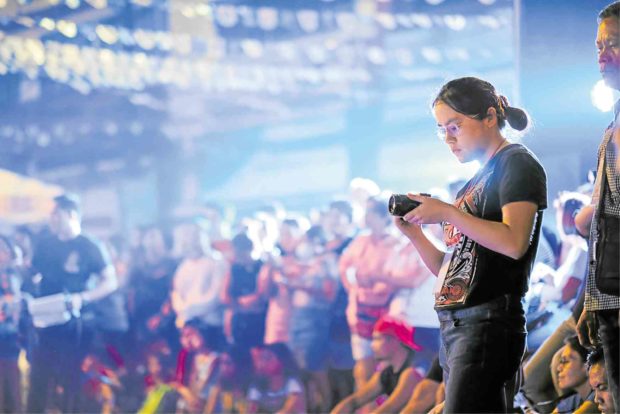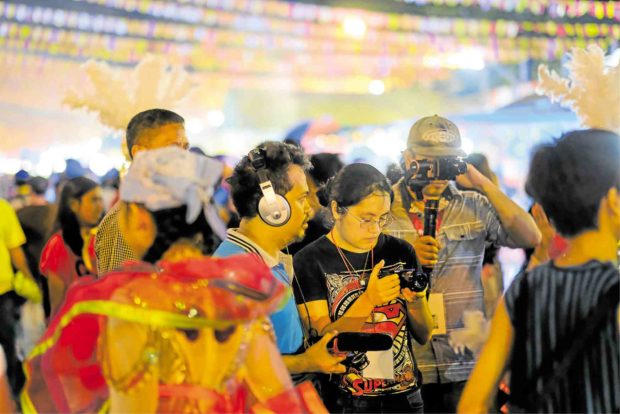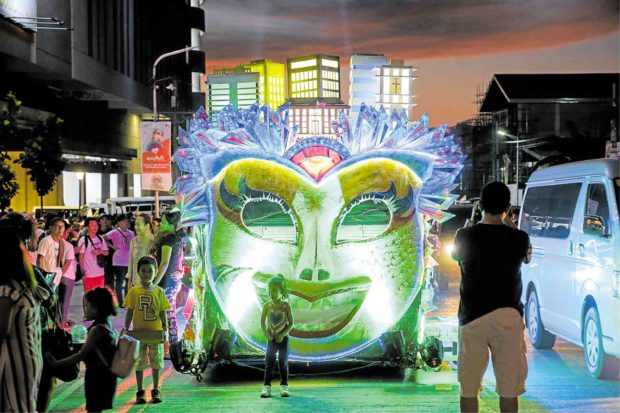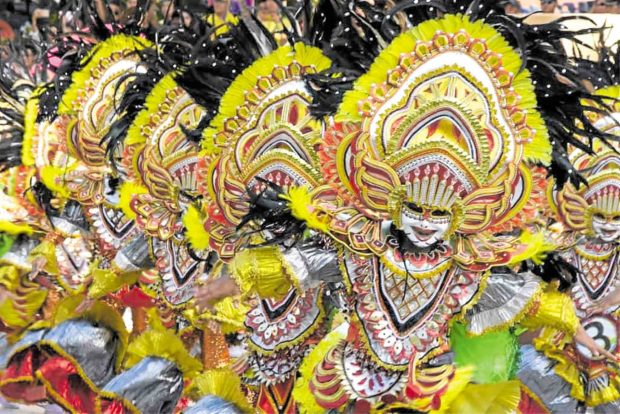Cojuangco scion returns home to Negros to tell MassKara fest story

Her simple appearance, though, reveals nothing ordinary about Claudia Diaz Cojuangco, the 24-year-old granddaughter of tycoon Eduardo Cojuangco Jr. and daughter of Tarlac Rep. Charlie Cojuangco and Rio Diaz, the late beauty queen and television personality.
The young woman recently returned to Negros Occidental province, where she spent her childhood, to film a documentary on the 40th MassKara Festival, Bacolod City’s iconic tourism event held every October and featuring groups of competing dancers wearing smiling masks.
While growing up in the family-owned farm in Pontevedra town, Cojuangco acknowledges that she had never attended the festival. MassKara started in 1980 to raise the spirits of the Negrenses pulled down by an economic crisis following the plunge of sugar prices to an all-time low and the death of more than 100 provincemates during the collision between the MV Don Juan and a tanker in Leyte.
Cojuangco’s documentary focuses on the choreographers to reveal “the stories of the people behind the masks, the effort, hours, energy they put in for one grand performance.”
Her work has brought her to the city’s villages to film the nightly rehearsals of performers for the street dancing competition held last week. There, she observed how involved the people were.
Article continues after this advertisement“The whole community is involved. People bring food for the dancers and secure the area so nobody from other barangays come in to try to steal information,” she says.
Article continues after this advertisement“The barangay’s performance is a tightly guarded secret. It is very much a family setting. The community spirit is something else,” she adds.
Happy memories
Cojuangco has been fascinated with filmmaking since she was a child.
Though her mother, a popular TV host, would encourage her to sing and dance, she developed a passion to stay behind the camera.

NEGROS’ DAUGHTER Claudia Cojuangco, a proud daughter of Negros Occidental, considers the annual MassKara Festival as a “living history” since it is rooted in people trying to overcome tragedy. —DARYL JIMENEA
“I think of myself as kind of boring. I always considered my parents and my younger brother to be more talented in front of the camera. They kind of have that personality that really shines in front and I’ve always been more comfortable sort of being behind, making things rather than have my face on it,” she tells the Inquirer.
Cojuangco has a lot of happy memories of growing up in the Pontevedra farm, where she and her younger brother, Jaime, spent endless hours playing. “I remember a lot of laughter, hanging out together as a family,” she says.
She recalls that her mother would dress them in matching outfits. The siblings would eat ice cream and junk food with her.
“I think she also kind of wanted me to be a girlie girl. She would sign me up for ballet and stuff and I preferred to do karate instead,” she says.
Difficult moment
Then tragedy struck the family in 2004.
Cojuangco was 9 when her mother died of colon cancer. The family moved to Manila.
It was a difficult moment for the young girl, who had yet to come to terms with her loss but also had to establish new friends in a new environment.
She and her brother became closer since their father was busy at work.

HIGHLIGHT Among the highlights of the MassKara Festival is the Electric MassKara, which dazzles spectators with a burst of colors. —DARYL JIMENEA
“After she died, I think because we had to move back to Manila and start [in] a new school, there were a lot of quiet moments, not just outside of the house but inside as well in the new apartment that we were in with my Dad. I just remember a lot of me and my brother (Jaime) because my Dad was kind of busy with work,” Cojuangco says.
“I had to sort of find my own friends, not just growing up with some or being introduced to some, but really finding out who are the kind of people I was proud to be associated with,” she says.
Playtime
Her playtime became making films on her phone.
While at middle school at British School Manila, she and her classmates became involved in a lot of projects using videos.
“I started being the person to shoot and edit videos for others at school,” Cojuangco says.
She didn’t take up film in college because, she says, she did not want to risk falling out of love with filmmaking.
Instead, she took up AB Communication Arts and BS Marketing Management courses at De La Salle University and Communication Studies at Loyola Marymount University in Los Angeles where she graduated magna cum laude.
In Los Angeles, she worked as production assistant for a couple of short films and commercials. She also took some editing and filmmaking classes.
Her father, Charlie, who is an art collector, was supportive of her chosen career that he would not even hesitate to give her constructive criticism.
Aside from Jaime, she is close to her older brother, Ali (her mother’s son with singer Hajji Alejandro), especially because the latter is an artist. Ali, who owns a production company, is also a visual artist and a musician.
Connecting with home
Cojuangco says she picked the MassKara Festival as the subject of her first major documentary because she grew up knowing about it but never got to see it.

MAIN CHARACTERS For Claudia Cojuangco, the festival’s main characters are its choreographers and dancers—the people behind the iconic smiling masks of Bacolod City and Negros Occidental. —ANDY ALVAREZ
“Making the documentary was a way for me to experience the festival but also kind of understand it in a way that most people don’t get to,” she says.
Filming in Bacolod also enables her to reacquaint herself with the place she and her mother called “home.”
“That’s the smallest of connection, [but] at least there’s some connection,” she adds.
Cojuangco says she still misses her mother. “What’s hard for me is sometimes I have to go to tapes and stuff just to remember what her voice sounded like, what her laughter sounded like.”
“But I think that the fact that I still have some memories and I can talk about her … there is an element of sadness, but it does not make me depressed at all. She’s alive because people continue to talk about her, continue to remember her—that’s a positive thing,” Cojuangco says.